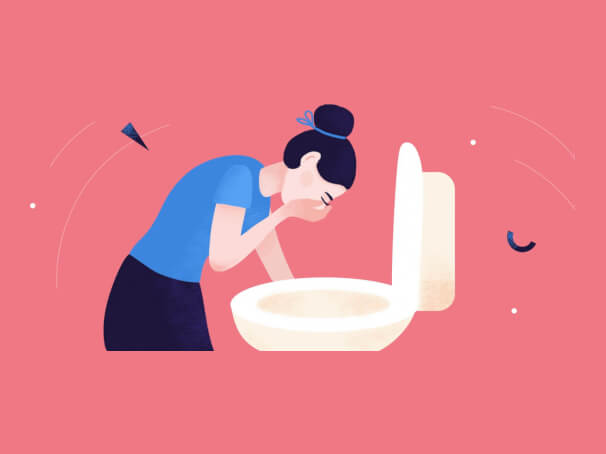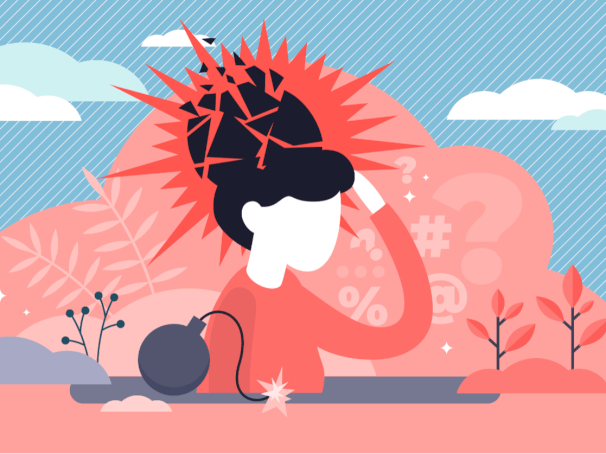
It’s no secret that our upbringing and experiences can lead to anxiety. While genetics plays a role in the development of anxiety, stressful experiences may reinforce fear and other negative emotions, causing anxiety to emerge.
Hypersensitivity or “oversensitivity” is extreme sensitivity to a specific experience, such as sound. Auditory hypersensitivity or hypersensitivity to sound may include sensitivity to specific triggering noises or loud noises in general. Individuals with auditory hypersensitivity experience distress upon hearing the triggering sounds. Some people with anxiety may experience this type of sensitivity.
Understanding the Variations of Noise Anxiety
Hypersensitivity to noise is somewhat of a broad term as sensitivity may cause varying responses. Depending on the way a person experiences anxiety, the triggering noise may cause minor irritation or something much more impairing.
Generally, the following represent auditory hypersensitivity. Remember, your experience may be different from others’ experiences:
Specific Noise Triggers
Some people develop sensitivity to particular sounds. Often, these sounds are related to past traumas or recurring causes of anxiety. This type of sensitivity is the product of conditioning. Conditioning occurs when a specific trigger elicits a response. With respect to auditory hypersensitivity, this may be the experiencing of a negative feeling as a result of a specific sound: your mind immediately associates a sound with some negative feeling or experience. This symptom is very common in those with PTSD but may affect people with all types of anxiety.
Quick Startle Reflex
Anxiety causes your body to constantly be on high alert. The greater the stress and anxiety you experience, the more likely you are to have a higher natural baseline for stress. If anxiety levels reach a certain height, a person may be more prone to being startled, often described as being “jumpy.” This is due to the body being on high alert for danger.
Irritation
Anxiety may cause irritation. Irritation can cause people to experience a rush of negative emotions when they hear loud or triggering noises, or sounds that disrupt the thought process. Disruptions of silence may be particularly likely to trigger irritability.
Stress-Related Tension
Finally, when a person is feeling anxious, physical symptoms such as tension headaches or nausea may result. A person experiencing these symptoms may be especially prone to auditory hypersensitivity. Certain sounds may exacerbate these physical symptoms or increase the general feeling of unease associated with anxiety attacks. In some cases, a person may perceive noises to be louder than they actually are.
All of these fall under auditory hypersensitivity as they are all ways in which you and your body react to sound.
It’s also important to remember that you can experience this type of sensitivity even when you don’t feel anxiety or have anxious thoughts. Anxiety is largely a physical experience. You may find that you are tense even when your thoughts are relaxed and calm. This may lead to the presence of hypersensitivity.
Controlling Your Reactions to Noise
Dealing with hypersensitivity can be difficult, but help is available. Cognitive behavioral therapy has proven to be extremely helpful for individuals experiencing many symptoms of anxiety. Exposure techniques in particular may be useful for reducing hypersensitivity.
What is Exposure Therapy?
Exposure therapy is the process of gradually being exposed to your anxiety trigger in a safe and controlled setting. Over time, your anxious reaction should decline and eventually be eliminated. It is recommended that a person start with the least distressing form of their anxiety trigger and work their way up to experiencing the actual trigger.
For example, if you have a fear of spiders, you might start by thinking about spiders. Once that no longer causes significant anxiety, you may move on to looking at photos of spiders. Next, you may move on to videos of spiders, then spiders across the room, then a spider right next to you, and finally a spider on you. You only move on to the next step when you no longer experience anxiety at the present level.
How to Apply Exposure Therapy for Noise at Home
If you would like to attempt to implement exposure therapy for noise at home, you can follow the steps below:
- Figure out what sound you’re most sensitive to — especially the one that you want to be less sensitive to over time.
- Make a recording of the noise.
- Sit in a place where you’re comfortable, and just think of the noise initially. Practice relaxation techniques if you notice your anxiety level rising.
- Once you are able to tolerate imagining the sound, follow the same procedure while listen to a recording of the noise. At first, you will likely experience intense anxiety. For this reason, it is important to be prepared to implement relaxation techniques. The recording is going to bother you a great deal.
- While you’re listening, do something that relaxes you, for instance, meditation or deep breathing. There are plenty of techniques you may use to calm your body so that your anxiety symptoms feel easier to tolerate.
- Gradually increase the length of time over which you expose yourself to the sound. Eventually, you’ll find that the sound causes a lower level of distress than previously.
- To truly master exposure therapy, you may wish to repeat these exercises in progressively less calming environments. Thus, you may fully extinguish the negative response to the trigger.
These exercises will help you to build tolerance for the sound and decrease your hypersensitivity.
Once you have reduced your hypersensitivity, you should continue to learn to cope with and manage your symptoms of anxiety in order to prevent the recurrence of negative symptoms and the future development of hypersensitivity.
SUMMARY:
Sound sensitivity may be the result of trauma (including PTSD), or it could be a symptom of anxiety, known as “hypersensitivity,” that occurs when people are in an anxious state. For specific sound-related anxiety, exposure is one of the more effective ways to reduce its severity. For hypersensitivity and other forms of anxiety, reducing the anxiety overall is the best way to treat it.











